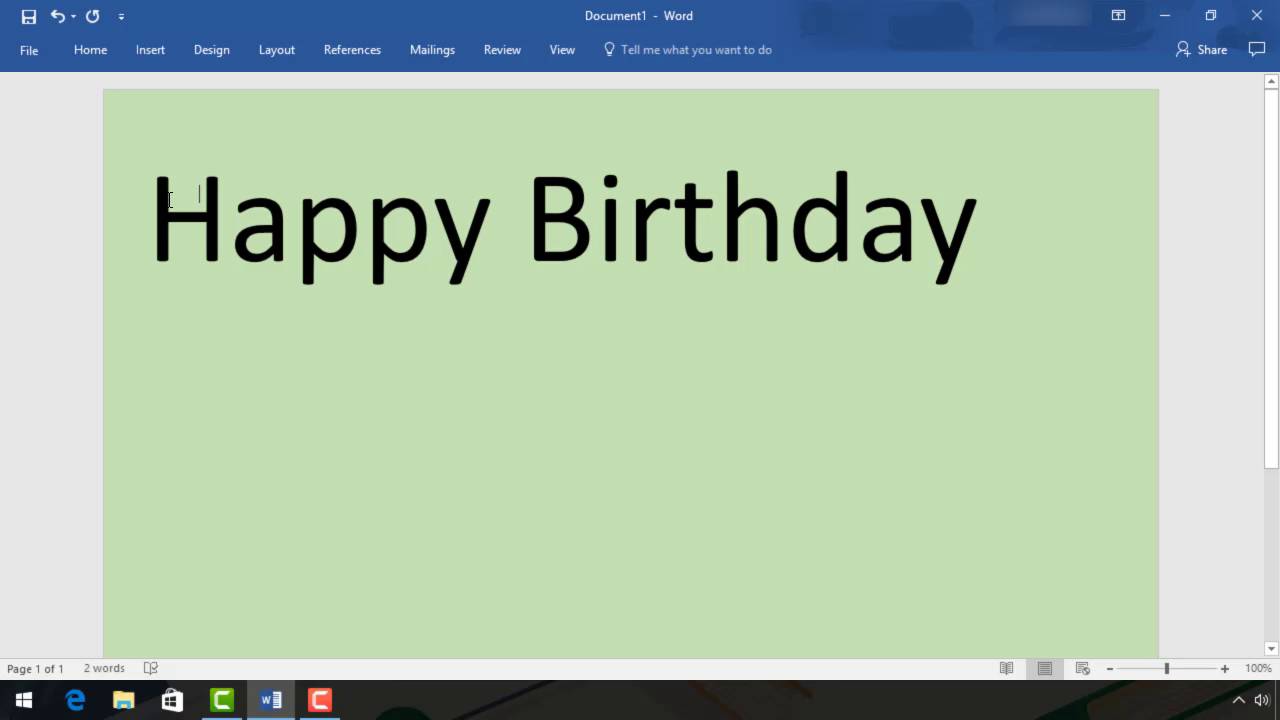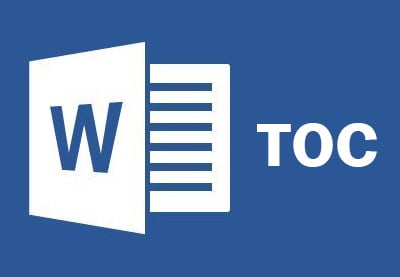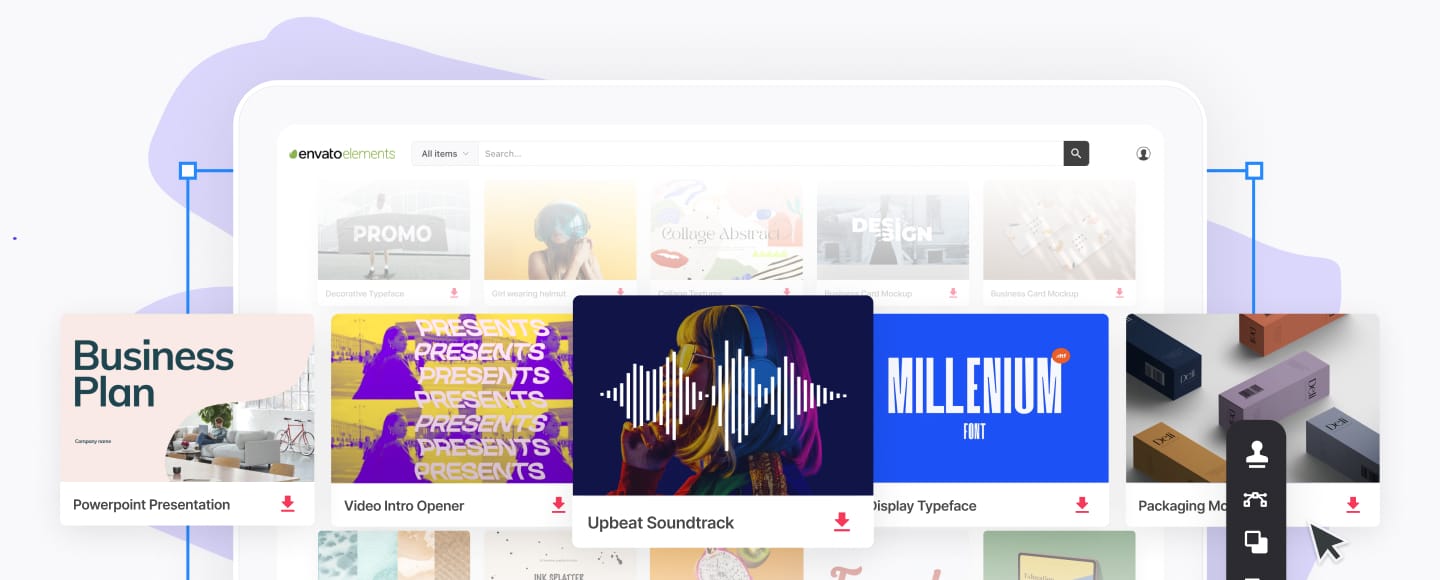Most of your Word documents are likely set in standard, drab Times New Roman or Calibri typography, perhaps with the occasional cheesy Word Art thrown in for variety. Yet Word actually includes a number of text effect tools that give you everything you need to make beautiful art from your words.
In this tutorial, I’ll show you how to create the cool text effects you want in every modern version of Microsoft Word, using its advanced type and typography formatting features. Once you’re done, you’ll know the tricks that I used to make Word templates that look great.
How to Make a Stylish Text Effect in MS Word (Quick Video)
In this quick screencast video, you'll learn how to go beyond default Word Art options and make a cool text effect in Microsoft Word, using text formatting tools to create stylish typography:

For more detailed information on how to make beautiful Word text effects, review the step-by-step instructions below.
How to Make MS Word Text Effects (Step by Step)
Learn how to apply both standard text effects and more advanced options inside Microsoft Word’s Format pane, such as Drop Shadow and Reflection. Discover how to transform your text into cool typography art. Let's get started:
1. Set Up a New Page in MS Word
Start by creating a new document by either clicking File > New or pressing the Control-N shortcut. To set properties like the page orientation and the page size, jump into the Layout tab.
.jpg)
.jpg)
.jpg)
If you plan to print your document and you already know the final paper size, it is important to set it as a first step. Why? Microsoft Word lets you easily scale any object, but some properties, like the outline width, remain unchanged. Font size also stays the same during the resizing, and has to be updated manually. Working in the final paper size right from the beginning helps save time in the future.
There are two things you need to know about the Layout tab before we set the final page size values. First, the Size drop-down menu contains only the paper sizes which are possible to print with the currently selected printer. In other words, you cannot set an A3 paper size when your printer can only print up to A4 documents. To fix that, you can jump to the File > Print menu and change the printer to a different one for a second, for example the Microsoft XPS Document Writer, which is a "virtual printer" that only saves files locally to your computer.
.jpg)
.jpg)
.jpg)
Don't print anything, but once you've chosen a different printer, go back (using the left arrow in the top left corner), and open Layout > Size again. The list of available sizes should be much larger now.
.jpg)
.jpg)
.jpg)
Then, the other thing worth noting is that the drop-down menus for Margins, Orientation and Size may not be enabled all the time. If you have a Text Box placed and selected inside the document, some Layout options will be disabled. I'm specifically pointing this out because we will use Text Box objects all the time, and jumping to the Layout tab and seeing those options disabled can be quite frustrating.
.jpg)
.jpg)
.jpg)
Now you know how to always be able to set a page Size. Set the size to A4 and the Orientation to Landscape. Your page is now set up the way you'll want for your custom Word text effect art, and you'll know how to tweak it again next time.
.jpg)
.jpg)
.jpg)
2. Change the Font and the Font Size
Now, it's time to add your text and start tweaking it. Type anything you want, select the text, and pick the font and size you want. Most of the text effects look best in large sizes, so don't be afraid to use either the Increase Font Size button or the font size drop-down menu to make the text really big.
If the maximum value of 72 pt is not enough, type in any number you want, for example 250 pt (only type the number). You can also use non-integer values, such as 198.5, if you want to get the largest possible text without wrapping.
.jpg)
.jpg)
.jpg)
3. What Is Kerning? (How to Set It in Word)
Let's look at an important concept for setting typography in Word. When a type designer creates a font, every letter has its own width set to make sure the gaps between the letters are even. This works fine in most cases, except for the combination of letters with less "rectangular" shapes, like "V" and "A".
Thus, type designers add “kerning” features, which specify that those two letters when placed next to each other will have the gap smaller (or bigger). In a perfect world, an application uses this kerning and everything looks fine. Well, not everything functions as expected in the real world.
.jpg)
.jpg)
.jpg)
If you only need to know one thing about kerning, remember this—it should always be enabled, but it is off by default in Microsoft Word. To turn it on, open the Font dialog (Control-D) Advanced tab, and check Kerning for fonts X points and above.
When you check this checkbox, a current font size is filled into the edit box, but you probably want to change it to 1 pt instead—just to make sure it will be really enabled all the time for any text. Then click the Set as Default button. For more information about kerning, see Quick Tip: Typography Skills, Basic Kerning.
.jpg)
.jpg)
.jpg)
It is important to know that the kerning also has to be enabled this way for every text box in the document. If you accidentally or on purpose delete everything in your document (Control-A > Delete), the kerning is again turned off.
4. Apply Standard Text Effects in Microsoft Word
Before we start adding our own text effect, let's briefly take a look what Word offers us in the Text Effect and Typography drop-down menu on the Home tab on the ribbon. There are 15 pre-defined text effects with different outlines, fills, and shadow effects, and some of the presets also include 3D effects. The colors of those presets always reflect the selected color theme.
.jpg)
.jpg)
.jpg)
You can jump to the Design tab and select a different color scheme from the Colors drop-down menu. Jump back to the Home tab, open the Text Effects and Typography drop-down menu, and it should look a bit different.
.jpg)
.jpg)
.jpg)
This is nice, but unfortunately there's no way to adjust those presets. The items in this list cannot be edited or deleted, and you cannot add new presets. Those 15 presets can be helpful if you need a nice looking header and you only have two minutes of your time, but you will learn nothing new about the text effects just by using them.
5. Body Text vs. a Text Box
The text can be placed in a document in two different ways. The usual way is to create a new document and start typing. We can call this type of text "body text". While the text effects can be added to this body text quite easily, they are limited, and thus using body text is not a preferred option.
The second way is to use a Text Box object and write into this text box. To insert a new Text Box, select Insert > Shapes > Text Box, and draw a new text box the same way you draw for example a rectangle.
.jpg)
.jpg)
.jpg)
The text placed inside a text box has several advantages. It can be moved around the document freely without any restrictions (even off the document or over the margins), and it can be rotated. Moreover, some additional text effects like the 3D rotate options are available.
If you do not like the default appearance of the text box—especially the white fill and the black outline—both can be easily set to none on the Format tab. Use the Shape Fill and the Shape Outline drop-down menus.
.jpg)
.jpg)
.jpg)
To select a text box with no fill and no outline, click over the text, which will show the text box borders as a dotted line. Clicking over this dotted line to select a text box should be easy now.
6. Change Your Page Background in Word
The standard white paper color may seem a little bit boring for our text effect, and it may be a good idea to set it to a different color. Go to the Design tab, and from the Page Color drop-down menu, select a dark gray color. As for any other color drop-down, the first two columns with grays are still the same, but the eight columns on the right side change depending on the chosen color palette. After changing the background, the black text inside the text box is almost invisible now, but that's fine—we'll fix it in a minute.
.jpg)
.jpg)
.jpg)
7. Master the Almighty Format Pane
The Format tab in Word allows us to format the text box as well as the text itself. There are drop-down menus for the text fill, outline, and all the other possible effects, and there are submenus and submenus and submenus. It is definitively not an easy way to tweak the effects, and we only have access to a limited number of presets and options. There is a better place to adjust the setting—the Format Pane.
The Format Pane is an essential pane for setting all the advanced options, yet there is no standard way to display this pane. In short, every "More…" item on the Format tab (More Lines, More Gradients, More Textures) opens the Format Pane, but since we have the Text Box inside our document, we might as well right click the text box border and select Format Shape.
.jpg)
.jpg)
.jpg)
Before we move on, remember there is only one Format Pane, but the content of this pane changes depending on the selected content. It's different for the text box, for body text, and for an image.
I say it to prevent any confusion, because the name of this Format Pane also changes—it can be Format Shape, Format Text Effects or Format Picture. Because this will be our base station for setting all the effect, it is a good habit to keep this pane open all the time.
8. Set the Text Fill and the Outline
With the background color set and a Format Pane still open, select the text box and type in any word, for example “Effect”. Keep the font set to Calibri and set the size to 72 pt. In the Format Pane, select Text Options, open the Text Fill settings, and change the Text fill from the Solid Fill to the Gradient Fill. From the Preset Gradients drop-down menu, select a yellow top spotlight. This will create a subtle shading, as if there was a light source shining from the top.
.jpg)
.jpg)
.jpg)
To make the text a little bit more interesting, we will also add an outline. Change the Text Outline from No Line to Solid Line, raise the Width to a bigger number, for example 3 pt, and change the Color to white.
.jpg)
.jpg)
.jpg)
The outline is nice, but too strong. We can open the Compound Type drop-down menu and select Double, which will split the outline into two: one visible over the text, and one outside the text. To get rid of the ugly joins, change the Join type to Round instead of the default Bevel.
.jpg)
.jpg)
.jpg)
All we need to do now is to increase the Transparency to make this outline less visible. A value around 60% seems to be just fine.
.jpg)
.jpg)
.jpg)
9. Add More Cool Word Text Effects
With the text box still selected and the Format Pane still open, switch to the Text Effects tab. As a first effect, we will add a simple drop shadow below the text. Open the Shadow effect properties, and from the presets drop-down menu, select Outer: Offset Bottom. Because the page background color is quite dark, the effect is quite subtle, which is fine, and probably does not need any additional tweaking.
.jpg)
.jpg)
.jpg)
If you want, you can also try to add a Reflection effect. Select any preset, but increase the Blur value to make the reflection less visible and not too distracting.
.jpg)
.jpg)
.jpg)
In just a few steps, we have a nice looking text effect, and we can call it done.
.jpg)
.jpg)
.jpg)
10. Share the Document (.docx vs .pdf)
When sharing your document with your friends, you can choose between two main formats: the Word native .docx, or Adobe Acrobat .pdf file. The document saved in .docx format keeps the effects fully dynamic, but depending on the effects used, the other person often needs to have the latest version of Microsoft Word installed. Otherwise, the document can look different (and most likely ugly).
The biggest advantage of the document saved in a .pdf format is that it will look exactly the same on every device, in any application. However, you lose the ability to edit the text effects, and probably also the ability to edit the text. Microsoft Word can export as well as import the .pdf files, but the ability to edit the text with the applied effects is in most cases lost. For more information, please read this helpful tutorial:
To save the document in the .docx format, simply hit the save button—it should be the default format. To save the document as a .pdf file, select File > Export > Create PDF/XPS, and then choose PDF in the file type drop-down when saving the file.
.jpg)
.jpg)
.jpg)
Key Takeaways: For Making Your Own MS Word Text Effects
We've only scratched the surface of the text effects in Microsoft Word, but you should have a solid knowledge of the Word basics needed for future effects. Here is a list of the main takeaways:
- When possible, set the paper size as a first step. Resizing the objects afterwards can bring unexpected complications.
- Most text effects look best in very large sizes.
- Always be sure to enable kerning and good typography practices when working with text in Word.
- There is a difference between "body text" and text placed inside a Text Box. For text effects, text placed inside a Text Box is preferred.
- The Format Pane is the best place to change any formatting—make sure to have this pane visible all the time.
- Share your creations in Word .docx format to keep the ability to edit, or Adobe Acrobat .pdf format to make sure everything will look the same at all times.
Enjoy creating your own text effects using these steps, and leave a comment below if you have any trouble making your own text effects in Word!
To learn more about Microsoft Word, study the following tutorials:


 How to Create a Table of Contents in Microsoft Word
How to Create a Table of Contents in Microsoft Word

 Bob Flisser27 Mar 2017
Bob Flisser27 Mar 2017

 How to Simplify Word Document Formatting With Styles
How to Simplify Word Document Formatting With Styles

 Bob Flisser08 Mar 2017
Bob Flisser08 Mar 2017
Editorial Note: This post was originally published in 2014. It has been comprehensively revised by our staff to make it current, accurate, and up to date—with special assistance from Laura Spencer.





